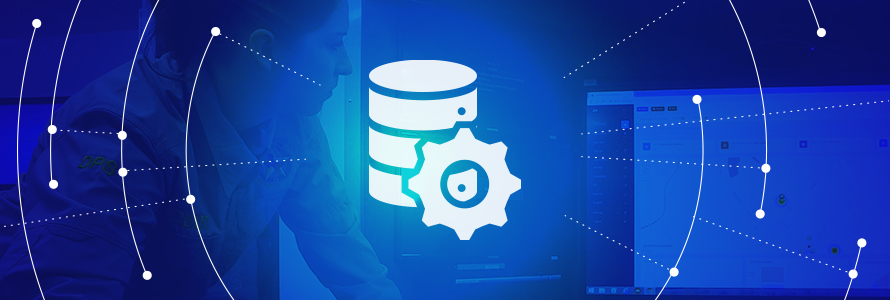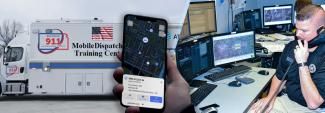This is the fifth entry in a blog series that will explore the FirstNet Authority Roadmap domains. You can also learn about: the Core, Coverage and Capacity, Situational Awareness, Voice Communications, and User Experience. Download the full Roadmap at firstnet.gov/Roadmap.
In the midst of battling wildfires or administering life-saving medical care, first responders should not be burdened with the intricacies behind a secure communications system. Now with FirstNet, public safety can rest assured the nationwide wireless broadband network offers a comprehensive communications solution that navigates security and authentication procedures so first responders can focus on doing their jobs.
FirstNet designed to secure emergency communications
The First Responder Network Authority (FirstNet Authority) worked hand-in-hand with public safety to gather their critical communications needs as we planned for the FirstNet network. Public safety told us they needed a secure, reliable, easy-to-use network, and we knew the task required developing a broad communications solution to offer a collective set of security protocols, tools and services to all public safety disciplines. Public safety also told us that the FirstNet solution needed to remain flexible enough to address each agency's specific security needs and objectives, regardless of agency size, location, IT proficiency or budget constraints. The challenge called for building a strong network foundation to ensure that first responders nationwide could securely share and exchange critical information.
To construct a highly secure communication network, FirstNet Authority entered into a public-private partnership with AT&T to build FirstNet with a dedicated Core – physically and logically separate and redundant infrastructure that helps to protect first responders’ critical and sensitive information while communicating over FirstNet. With the dedicated public safety core in place, FirstNet offers security measures to protect information being shared and received by first responders, including: end-to-end encryption, user authentication and round-the-clock monitoring through a Security Operations Center staffed with a dedicated team to protect critical data, applications and services running over the network.
“FirstNet is built with these underlying security components in place, so first responders do not have to think about security during their daily or emergency operations,” said Billy Freeman, FirstNet Authority Senior Public Safety Advisor, a 28-year veteran of fire and EMS services, and former lieutenant of the Memphis Fire Department in Tennessee. “The network’s built-in, secure data capabilities ease the burden from all public safety agencies – and especially smaller ones, that may not have the time or resources to dedicate to improving security.”
FirstNet in Action: securing data exchange for first responders
Already, thousands of public safety agencies are experiencing FirstNet’s secure communications platform, which is enabling first responders to confidently send and receive critical data, voice and video transmissions.
In 2019, the FirstNet Authority joined Texas A&M University Internet 2 Technology Evaluation Center’s Winter Institute Workshop and Exercise for a practice and training event. During the two-day event, emergency responders used FirstNet to secure and enhance operational communications during a real-world earthquake scenario. Throughout the exercise, first responders replicated their real-world experience pulling data from multiple public safety sources as incidents unfolded to increase visibility and situational awareness. The training experience underscored FirstNet’s ability to provide a secure data stream, so first responders can securely receive and transport sensitive information in life threatening situations.
Texas A&M Engineering Training Manager Clint Arnett knows that first responders require secure, clear, and uninterrupted signals during emergency response. “In this day and age of cellphones, cameras, social media and everything else, there are so many data streams that are available to everyone now. Part of the challenge is sorting out what’s important to who and who gets what. FirstNet offers a secure first responder-only network,” he said.
With every connection, the FirstNet Authority learns more each day from first responders who rely on FirstNet’s secure and reliable emergency communications during every day and emergency use. FirstNet currently connects the Junction City Fire Department’s EMS division to hospitals with advanced patient care throughout that rural, Midwest community in Kansas. The Junction City Fire Department relies on FirstNet’s secure data connections to transmit sensitive patient data and consult with doctors while enroute during long distance transfers to trauma facilities.
Kent Vosburg, EMS Division Chief at Junction City Fire Department, is adapting technology to fit the needs of the community. “We use our tablets as hotspots for FirstNet to send data straight to the hospitals so they can get real-time information about the patients,” he said.
With FirstNet’s dedicated and secure connection serving as its backbone for date exchange, local EMS technicians across Junction City can securely transport and share sensitive health information to help treat patients more efficiently and support better decision making.
The FirstNet Roadmap and the Secure Information Exchange domain
Public safety’s critical communications needs are at the heart of FirstNet and the work we do here at the FirstNet Authority. The FirstNet Authority understands that public safety requires a network with built-in security and reliability to ensure the real-time delivery of the lifesaving data that supports their daily and emergency operations.
In 2019, the FirstNet Authority conducted hundreds of engagements with thousands of public safety stakeholders to hear about public safety’s most pressing communications needs. Through these meetings, public safety indicated the need to protect highly sensitive information (e.g. personal identifiable information, private health information or law enforcement sensitive information) while at rest and/or in motion. For data storage platforms, public safety emphasized that security protocols should adhere to industry established security best practices and comply with all relevant laws and regulations.
With this in mind, the FirstNet Authority developed the Roadmap to guide FirstNet’s growth over the next five years with input from public safety, industry, government and our network contractor, AT&T. The FirstNet Authority included the Secure Information Exchange domain as one of six technology domains in the FirstNet Authority Roadmap to further shape and improve the FirstNet user experience.
To meet public safety’s security goals, the Secure Information Exchange domain includes three distinct priorities to promote the safe exchange of critical and sensitive information over FirstNet:
- Data Access – Improve the performance and use of Identity, Credential & Access Management (ICAM) through evaluation of real-world experiences.
- Data Sharing/Interoperability – Collaborate across governments for standardized governance and procedures to simplify and integrate access and exchange of information with select national-level data sets.
- Cybersecurity – Assess industry standards and procedures for end-to-end security of information at rest, in motion, and in use.
Using these three priorities as a framework, the FirstNet Authority took public safety’s input and combined it with available data to develop primary focus areas that support the identified priorities. The work in these focus areas will ensure that first responders gain access to easy-to-use security measures and secure access to reliable data and information over FirstNet. In the coming years, the FirstNet Authority will work with our government and industry partners in the following areas:
- Data Access – Identify enhancements that will provide access to various internal and external data sources to improve incident response (e.g., criminal justice records, patient health data or data on critical infrastructure)
- Data Sharing/Interoperability – Identify enhancements that allow for seamless data sharing through common public safety applications, software, and records management systems between and among agencies and jurisdictions.
- Cybersecurity – Identify enhancements that afford a comprehensive view of data access and security throughout the FirstNet network. This focus area will ensure data is accessible only to authorized personnel and that the data remains secure, both in motion and at rest.
As part of the Roadmap strategy, the FirstNet Authority has continued to meet with public safety stakeholders about the Secure Information Exchange domain. From October 2019 to February 2020, more than534 engagements took place, and of those nearly 38 percentdiscussed the Secure Information Exchange domain in some capacity. Public safety stakeholders have relied on these sessions to discuss their needs and learn how FirstNet is equipped to protect data and information.
Meeting public safety’s security expectations
Since releasing the Roadmap, the Secure Information Exchange domain has served as the basis for developing initiatives to drive the FirstNet Authority’s programs, activities, and investments in the coming years. Future planning for FirstNet will be targeted to meet the security expectations of first responders, paying attention to ongoing feedback from our public safety community.
Recently, the FirstNet Authority’s Public Safety Advisory Committee (PSAC) formed a Strike Team to examine new applications of telehealth to support EMS providers in delivering the “Right Care, at the Right Time, at the Right Place.” The Strike Team found that the FirstNet network is uniquely situated to facilitate a key component of the Centers for Medicare and Medicaid Services new Emergency Triage, Treat, and Transport (ET3) program.
The ET3 program is a voluntary five-year model pilot program that allows payment for the first time to an EMS service, after a 911 dispatch, for assessment and treatment in place (TIP) on scene without transport to a hospital Emergency Department being a necessary part of the process. FirstNet not only meets the minimum criteria for an ET3 telehealth link to enable TIP, but has several features that distinguish it from other standard commercial wireless networks. For example, FirstNet routes all information from public safety subscribers through its dedicated core for more security and reliability and end-to-end encryption of data sent through the network, which helps to ensure the cybersecurity of medical and patient information. Similar to this effort, there are plans to kick-off an ICAM focused Strike Team under the PSAC in the near future.
Because of support for initiatives like these, the FirstNet Authority will continue to work on measures to ensure that information is protected from unauthorized access through a variety of ongoing efforts with government and industry related to data and information sharing. As the FirstNet network matures and moves toward more advanced capabilities, the FirstNet security approach is being continuously updated and refined to ensure the ongoing security of the network.
If you have input on targeted outcomes for the Roadmap or public safety innovations to help you and your agency’s operations, reach out to your Public Safety Advisor to schedule a meeting or learn how to engage with the FirstNet Authority.
For more information on the Secure Information Exchange domain, including key technology areas, and its relation to the other five Roadmap domains, visit www.firstnet.gov/roadmap.




















